Radko Tichavsky is a Czech born Mexican Agrohomeopath. He is a co-founder and director of Instituto Comenius in Mexico and author of Handbook of Agrohomeopathy, 2007 (Spanish) and Homeopathy for Plants, 2009 (Spanish), Organon de la Holohomeopatía and creator and teacher of Holohomeopathy.
He is now offering a one-semester virtual course in Holohomeopathy (in English). You can learn how to define and analyze holons and how to repertorize the specific homeopathic treatment beyond just disease or pest names. You can find out more here: www.icomenius.edu.mx
NEW BOOK: Organon de la Holohomeopatía
Six years in the making, it is the latest book by Radko Tichavsky, researcher on the application of homeopathy in agriculture. This Spanish language book covers homeopathic interventions in agriculture from the holistic view, allowing greater certainty in repertorizations. It addresses a novel concept of metabolic similarity, not only among plants, but also among different species of the animal and plant kingdom. It studies the formation and dynamics of attractors, areas of greater vitality within the holons and coexistence units of different living organisms Holohomeopathy is a fascinating contribution to the application of homeopathy to plants. It allows one to discover a universe of surprising relations in vital dynamism. It puts into the hands of the agricultural producer, a valuable tool for the successful handling of pests and diseases in crops of any size. For ordering or information: [email protected]
Hello Plant Doctor,
My Areca palm seems to have some mottling on leaves and they are gradually dying. I am in Jaipur, India (mailing code 835227). The climate is dry and warm. Can you please help?
Thank you
Manish
Radko Tichavsky:
Dear Manish,
The plant in the picture seems to have a scale problem. You can apply some bleach-free dish soap with water and add a teaspoon of vegetable oil, for example Helianthus annuus and spread it on the plant after sunset.
To prevent future scale attack, you should make sure that the soil of your Areca palm has good drainage, as poor drainage makes it more susceptible to the scales. You can add and mix some beach or river sand into the potting soil to ensure better drainage. Also, you can apply Calcarea carbonica 3 CH alternated with Opuntia ficus indica 3 CH sprayed over the leaves.
Dear Plant Doctor,
Here in Texas we have a fungus called Oak Wilt that has affected many of the Oaks here. It is caused by the fungus Bretziella fagacearum (previously know as Ceratocystis fagacearum). Our ranch is located in Evant Texas (central Texas). It is mainly hot dry weather. Average highs in summer can range 90s F and 50-60F in Fall. We hardly get winter freezes. Average annual water precipitation 30 inches. There is also an abundance of Cedar and ragweed. The Cedar trenches on the other trees and there is mass conservation planning regarding the constant control of these cedar trees.
Thank you
Camille
Radko Tichavsky:
Dear Camille,
The spread of oak wilt is influenced by several factors: environmental, host and pathogen structure. Native Central Texas savannas consist of clusters of woody plants separated by open grassy areas.
Collaborative work of plants, microorganisms, insects, birds and mammals supported various niches: grassy patches, clusters of trees, transitional zones, and they evolved in response to fluctuating abiotic factors. Periodic wildfires ensured proper succession, keeping cedar (Juniperus ashei) at bay and promoting survival of species adapted to the area.
Humans fragmented the land into plots and ranches. Overgrazing of native grasses and herbaceous plants and absence of natural fires devastated the ecosystem. J.ashei is not the reason: pollen research shows Cedar in Texas as far back as the Ice Age.
There was clearing of old J.ashei endangered local birds who use its bark to build nests on Qercus with the aid of a web made by a specific caterpillar. Seed propagation of native grasses suffered as a consequence.
The resulting erosion and prescribed burns diminished the soil pool of fungal propagules, which are essential for the healthy development of Quercus. Grasses and herbaceous plants that harbor beneficial microorganisms and can prepare the soil for healthy trees are not present.
Oak wilt affects most severely the Red Oak species: Q.buckleyi (Spanish oak), Q.shumardii (Swamp red oak), Q. marilandica. White oak species are resistant: Q. stellata (Post oak), Q.laceyi (Texas blue oak). A subgroup of White Oaks called Live Oaks because they are evergreen (briefly shed their leaves in spring to immediately grow new ones) – are affected less than Red Oaks: Q.virginiana, Q. fusiformis, Q.germinata.
White oaks are more diverse, adapted to a broad range of habitats (co-evolved with various pathogens). Red oaks are adapted to wetter areas of Central America. White oaks develop tyloses (protrusions into their vessels that get lignified and impregnated with tannins), so during extreme drought or xylem infection, they can cut off regions of xylem to stop the spread of embolism or pathogens.
Red oaks have wider vessels, lack tyloses and have porous wood, so they are susceptible to fungal infections. Fungal pads or mats that form under bark causing it to crack and release spores of Ceratocystis fagacearum, only occur in red oaks.
These mats emit volatile compounds attracting sap feeding Nitidulid beetles implicated in the spread of fungal spores. The relationship is not obligatory, and spores can spread by wind or rain. C.fagacearum has little more than 24 hours to establish in the wound, which otherwise get colonized by Ceratocystis piceae, which is native to the ecosystem and prevents establishment of C.fagacearum. It is important not to prune oaks in spring, and to treat wounds with MT of Boswellia serrata, Boswellia sacra or MT of pine resin.
Live oaks come from coastal plane habitats but are adapted to survive fires. Their roots are deep and form “grafts” that are thought to contribute to C. fagacearum spread. Deep trenching/cutting the roots between oaks in an attempt to stop the spread might actually work the other way: trees connect via roots to spread information about pathogens and help each other prepare for invasion.
The easy spread of C. fagacearum between live oaks might be due to their genetic homogeneity: they tend to grow like clones, forming stands, sprouting from the roots. Also, arborists when they choose the “best” rootstock, produce trees of low genetic diversity, and therefore incapable to elaborate protective strategies.
The origin of C .fagacearum, the only species in its genus that causes true vascular wilt, is unknown. Other Ceratocystis in their native ecosystems are relatively benign and have considerable genetic variation.
C.fagacearum shows limited to no variation among isolates from different states in genetic studies, and therefore is considered to be derived from a single introduction. It is not surprising if we consider that C. fagacearum was used in central Minnesota from 1953-1967 as a selective silvicide, as means of eradicating Oak trees!
Given the multiple factors that contribute to C. fagacearum spread, I hope you understand the complexity of the problem. Simply using common antifungal
remedies would not yield lasting results. About 10-20% of infected Live Oak trees recover from the disease even without treatment. Bionosodes of antagonistic bacteria (Bacillus pumilus and Pseudomonas fluorescens) can be prepared, dynamized to 4JT and applied over the trees. Daucus carota and Beta vulgaris root contain both; Aloe vera leaf, Carica papaya fruit contain B.pumilus.
You can also apply any of the following preparations to affected trees in 6CH, elaborated from the MT. Plants grown without chemicals should be sought. 1. Zea mays (MT has to include seeds, husks, leaved and “corn silk”, best local variety) – it has 35 common metabolites, 28 fungicidal (24 not overlapping with those of Quercus), 2 fungistatic, 1 fungifilic. 2. Citrus paradisi (MT made from whole fruit, seeds and pericarp) – 32 com metab, 31fc (28 unique), 3fs, 1ff. 3. Daucus carota (MT from whole wild with seeds and root) – 30 com metab, 43fc (39 unique), 6fs, 1ff. 4. Vitis vinifera (MT from fruit and leaves, if possible buds – have jasmonic acid that aids with systemic resistance) – 30cm, 32fc (29 unique), 1fs, 1ff.
We chose plants having not only fungicidal substances, but also fungistatic and fungi attractants because healthy Quercus sp., like most trees, have a vast amount of fungal endophytes and epiphytes.
Coordination between fungi is regulated by numerous pathways, so we want to see a variety of substances that can regulate inter-fungi relationships. I have to mention here that Juniperus sp (J. virginiana, J. ashei) also have a fairly high metabolic similarity with Quercus sp., possess fungal regulating substances, and harbor quite a diverse community of fungal symbionts, some of which overlap with Quercus, so leaving some Juniperus trees is a better strategy than their eradication, especially if there are little herbaceous plants and grasses around.
Fungal symbionts of Quercus sp. are very diverse. For live bionosodes we use
endophyts of local plants because they possess unique adaptations to local biotic and abiotic factors.
- Endophytic fungi of healthy Quercus petiole/branch/stem, frequently present in deep-girdled Quercus (method to slow down Oak wilt progression) that help to control fagacearum infection: Graphium rigidum, Ceratocystis sp., Dothiorella sp and Hypoxylon punctatum (control by co-infecting fresh wounds), Gliocladium roseum, Hypoxylon atropunctatum, Trichotechium roseum, Trichoderma sp., Penicillium sp. (direct antagonism). Some do better in low humidity, some antagonistic to several fungi, Trichoderma lignorum sporulates best when it grows over C .fagacearum. Hypoxylon sp. is found in White Oaks resistant to wilt. The goal is to have a diverse community to ensure best control over pathogens.
Plants harbouring assembly of these fungi, are Pinus taeda (25 com metab), Carya texana (39), Prunus serotina (25), Crataegus texana (18). Most of endophytic fungi coexist with ecto-mycorrhizal ones (below). Take some roots, or twigs; wash them with water, dip in 30% alcohol, dry and wash again. Make a bionosode blending with cooked and cooled organic potato, water and 10% carbonated water, dynamize to 4JT and apply over your trees and soil.
Guignardia endophyllicola –a beneficial phyllosphere fungus – can be found in the leaves of Morus alba, Tilia caroliniana, Sophora secundiflora, Punica granatum, Prunus laurocerasus. Bionosode prepared from leaves to be sprayed at the phylloplane is prepared as the one above.
- Arbuscular micorrhizal fungi (Glomus sp., Acaulospora sp, Gigaspora sp.): rhizosphere soil of mature and healthy Quercus alba, Tagetes erecta, Ipomoea batata, Vitis vinfera or Zea mays, blend in water with cooked/cooled potato, add some carbonated water, cover with fabric, let ferment for day, dynamize to 3-4JT and spray at the soil around the tree.
- Ectomycorrhizal fungi (Cenococcum geophilum, Laccaria sp., Russula sp., Peziza sp., Tomentella, Lactarius, Cortinarius, Suillus, Tricholoma, Tuber sp., Polyporus sp., Sistotrema, Scleroderma, Atractiella rhizophila). Familiarize yourself with the looks of these fungi fruiting bodies (mushrooms), so you can identify them in park or forest; they grow around Pinus, Populus, Fagus, Quercus, Betula, Salix, Hacer, Tsuga, Juglans Collect some and hang on a branch of your tree to dry and disperse spores, or prepare as bioinoculant (without dynamization) and spray on rhizosphere soil.
Bionosode of rhizosphere soil of Helianthemum bicknellii, a native of oak savannas and prairies, that harbors 8 of ECF fungi, will also benefit Quercus.
These are suggestions only. A thorough study of local holon vegetation and fauna would reveal the best simillimum. Satellite mapping and fractal analysis of affected areas would help devise the best strategy. You can learn more about our holohomeopathy course at www.icomenius.edu.mx
To prevent and correct Bretziella fagaceum problems, Trichoderma viride (present in the roots of many species of Pinus sp. ) as an antagonistic fungus, or gram negative gammaproteobacterium Pseudomonas syringae (present in the root system of Hordeum vulgar or Phaseolus vulgare), and in conditions of temperatures below 30 degrees Celsius even some Firmicutes bacteria like Bacillus amyloliquefasciens for example can be of great help.
Even Tuber mesentericum or Tuber texense and other mycorrhizal fungi can constitute a good defense of Quercus (oak) trees. When talking about an individual pathogen it is often not considered that most pathogens require the cooperation of other bacteria and fungi to achieve their goal. On the other hand, the good biodiversity of microorganisms in the soil and mycorrhized trees are the best defense against any pathogen. Moving away from the simplistic pathogen-tree view, the fatalistic prognoses of fragmentary science, it looks much easier to prevent and solve these problems.
Translated with www.DeepL.com/Translator (free version)
Dear Mr. Tichavsky,
What might be suggested as a homeopathic treatment for Black Knot on Wild Plum trees. Over the past few years, it has gotten increasingly worse. I am afraid the trees may die. I have attached a photo from yesterday afternoon of one of the trees. They are beside a river. Location: Upper Ottawa Valley, Ontario
Horticultural Zone: 4b. Average precipitation 985mm/year. Average temp: 5.9 degrees C. Hardiness temp is about -25C
Thank you
Jaye Procure
Dear Jaye,
This fungal disease is caused by the fungus Apiosporina morbosa associated with other fungal pathogens. They stress the plum trees (Prunus domestica) and they can weaken them to the point of making them susceptible to other fungal or bacterial diseases, and in this course the trees can die.
First, all buds and branches with knots formed by the disease should be pruned during the winter and burned to prevent reinfection.
After pruning you always apply Boswellia sacra 3 JT made from the resin of the plant. First you grind a 1 part by weight of Boswellia sacra resin and add it to 99 parts by weight of 30% ethyl alcohol in a glass bottle and let it extract for one week in a dark place.
Then you proceed to the dynamization process always using a 1:100 dilution in non-chlorinated water accompanied by 500 vigorous succussions. For example: take 0.1 ml of mother tincture and add 9.9 ml of water and perform 500 vigorous succussions in a bottle of non-chlorinated water to obtain the 1 JT potency.
Then place the 10 ml of 1 JT potency in 990 ml of non-chlorinated water and perform 500 vigorous succussions to obtain the 2 JT potency. Then put 1 liter of potency 2 JT in 99 liters of non-chlorinated water and make 500 turns to the right and 500 turns to the left with a wooden stick, so you will get 100 liters of potency 3 JT, and this will be used to spray the trees to prevent infection after pruning.
To control this disease, you use the live bionosode of Ginkgo biloba 1 JT which contains many endophytic bacteria and fungi, including Chaetomium globosum, which lives in the intercellular spaces of Ginkgo biloba leaves and does not cause any discernible disease manifestation.
Then it will require a handful of Ginkgo biloba leaves. They must be leaves collected directly from the tree, not leaves collected on the soil. Then the leaves are washed well in tap water and washed again with 70% ethyl alcohol and again rinsed in sterile water or purified bottled water. It is important that chlorinated water is not used.
Then you put these leaves together in a liter of purified bottled water and mix them well in the blender. Add in 97.5 liters of non-chlorinated water. Leave water together with half a liter of molasses and two liters of mineral water with CO2 bubbles (without flavor or other additive). Then you make 500 turns with a wooden stick to the right and 500 turns to the left and apply the remedy by spraying on the infected trees once month. Remember that live bionosode must be prepared fresh each time and must be used within 24 hours after its preparation.
Greetings Dr. Tichavsky,
We planted spinach last season here in Rocky Mount Virginia (U.S. – mailing code 24151). Most of it ended up with downy mildew (Peronospora farinosa f.sp. spinaciae). It requires so much work to till the soil, nurture the seedlings, etc. that we’re hoping for a healthy crop this year. Can you suggest any way to avoid this disease? April through July we get about 9 days of rain a month. Temperatures range from 42 F. in April to 86 F. in July.
Thank you
Charles Norwood
Radko Tichavsky:
Dear Charles,
Soil microbiota are responsible for multiple metabolic functions that interfere with fertility, plant health, growth, nutrient cycling, formation of organic matter, decomposition and maintenance of soil structure.
Plant roots provide a niche for the proliferation of soil bacteria and fungi, which maintain their life under the influence of root exudates. Rhizobacteria in association with other microorganisms enhance plant growth through a wide variety of mechanisms, such as biological nitrogen fixation, phytohormone production, phosphate solubilization, siderophore production, 1-aminocyclopropane-1-carboxylate deaminase (ACC) production, antifungal activity, production of volatile organic compounds (VOCs) that promote beneficial symbiosis between plants and microbes, interference with pathogen toxin production, etc. , and even act as bioremediation of pollutants.
Peronospora farinosa f.sp. spinaciae is an Oomycete. It is considered an ancestor organism of fungi, but it is not classified as a fungus. However it behaves like one since it has hyphae that penetrate the intracellular spaces of plants and infect them.
Its presence in your crop is an indicator of low vitality, i.e., there is no community of microorganisms in your soil that act in beneficial association to provide and assist in the formation of antifungal metabolites in spinach. Bacillus spp. bacteria are considered to be safe microorganisms that possess remarkable abilities to synthesize a wide range of beneficial substances for pathogen suppression.
Most of the antifungal metabolites produced by Bacillus spp. are either peptides (bacillomycin, iturins, mycosubtilin, fengicin, surfactins, etc.) or non-peptides (zwittermicin A, kanosamine, etc.). To a large extent, these are compounds released by microorganisms in the soil, by species such as Bacillus thuringiensis, B. amyloliquifaciens, B. subtilis, B. cereus, B. pumilus, B. mycoses and B. sphaericus, and also the species of bacteria as Pseudomonas stutzeri and Azospirillum brasilense have antifungal activity and these species of bacteria in turn attract another set of microorganisms forming a beneficial community in the soil and within the plant.
The plants Zea mays (root, plant and pollen), Vitis vinifera (fruit, leaf, root, seed, shoot), Solanum tuberosum (flowers, tuber epidermis, tuber, root bark), Vaccinium myrtillus (fruit juice, leaf), Medicago sativa (flowers, tissue, plant, leaf, root), Apium graveolens (root, leaf, seed), Hypericum perforatum (flowers, stem, leaves, buds), Citrus sinensis (fruit, pericarp), Urtica dioica (plant, flower, shoot), Aloe vera (pulp) and Daucus carota (seed, root) have metabolic similarity with Spinacia oleracea and also contain endophytes (Bacillus sp. ) with antifungal, bactericidal, herbicidal, insecticidal, nematicidal, acaricidal, etc. activity, which help in the formation of secondary metabolites in spinach to combat pests and diseases.
In this case, make a mother tincture of any of these plants; place the plant and/or part of the plant in 30% alcohol in a glass bottle and let it stand in the absence of light for a week. Take a portion of this tincture, dilute it 1:100 in non-chlorinated water and make 500 succussions. Repeating this operation two more times you will obtain the 3JT potency and apply it as a spray on the plants.
Also, you can prepare a live bionosode. Cook a medium potato, let it cool down, remove the peel. Then disinfect the surface of the roots of the selected plant with 70% alcohol (e.g. clean the root with a brush and disinfect the Zea mays root with alcohol) with a little tap water.
Liquefy in a blender the potato with roots of any of the plants mentioned above and leave it at room temperature for a day. Then dilute this liquid in a ratio of 1:100 and make 500 vigorous succussions (if the volume is large then 500 turns with a wooden stick to the right and 500 to the left) to get 4 JT potency and spray on the crops.
Together with the live bionosode you can apply an adjuvant of Aloe vera to fix the remedy on the plants. Aloe vera also contains a great diversity of beneficial microorganisms. Disinfect the external part with 70% alcohol, extract the pulp, place it in water and mix it in a blender, adding this mixture to the live bionosode 4 JT and apply it as a spray.
Dear Mr. Tichavsky,
I have these indoor plants and they are all affected by an infestation of gnats. Can you make any suggestions?
- 1 pothos
- 1 fern
- 1 papyrus
- 1 aloe plant
- 1 ficus elastica
- 1 peace Lily
Thank you
Ingrid
Dear Ingrid,
The problem is due to the constantly wet soil of your plants. Gnats (Ephydridae and Sciaridae) and their larvae which normally feed on fungi and decaying matter are common in plants with substrates containing peat moss mix. They can cause damage to the roots of your plants.
They are also known vectors of Botrytis cinerea and Fusarium oxyporum pathogenic fungi of many plants. Be sure your plants are not over watered enabling fungus gnats to breed.
Pathogenic nematodes (Steinernema feltiae), predatory mites (Hypoaspis miles, Stratiolalaps scimitus and ‘Mighty Mite’, (Macrocheles robustus) and a predatory rove beetle (Atheta coriaria) are the natural enemies that you can buy even on the internet. Bacillus thuringuensis is also a known enemy of the gnats, also available on the internet.
Homeopathic strategy consists in applying Equisetum arvensis 6 CH together with a composite homeopathic preparation made from essential oil from Lavandula angustifolia Mill., marjoram (Origanum vulgare L.), and basil (Ocimum basilicum L.).diluted 1:100 in Helianthus annuus oil.
After mixing the essential oils with the Helianthus annuus oil, make 500 vigorous succussions and apply it as a spray on plants and soil. You do not need to cover the plants with oil, just spray lightly on them. This remedy act as strong repellent of the adult gnats and avoids oviposition of the gnats in the plants. By spraying all the plants once a week, you can cut the reproduction cycle of the insect.
It is important to do the application on all plants inside your house because the insect can migrate from one plant to another, disappear on some plants and settle on others.
Dear Dr. Tichavsky,
Last summer we tried making a compost for the first time. We did our best to include plenty of ítems that supply carbon and nitrogen, like grass clippings and dried leaves along with vegetable scraps from the kitchen.
We added water to keep it damp and turned it regularly. It never fully decomposed and it doesn’t look like any normal compost. Is there a remedy or something else we can add to a compost this year to help it decompose? We’re in Camden New Jersey (U.S.) where we have a moderate climate and the summers range from 70 -95 F.
Thank you
Miriam
Radko Tichavsky:
Dear Miriam,
To form properly, the compost must be composed of three layers: a layer of dry fiber (carbon source), a layer of green leaves (nitrogen source) and a layer of inoculum formed by the soil available in your holon (not bought in supermarkets).
Prepare it in this order with the addition of those layers until reaching the maximum height of 70 cm. The thickness of each layer should not exceed 5 cm. Higher compost beds produce anaerobic organisms at the base of the compost.
It is not necessary to remove the layers, and the compost must pass through two phases: the bacterial base (generally one and a half months duration) and the fungal phase (generally one and a half months duration). The speed of each phase depends on the humidity, temperature, microorganisms present in the compost and composition of the composted materials.
In the first part of bacterial stage, there will be lots of mesophilic bacteria (Alcaligenaceae, Alteromonadaceae, Bacillaceae, Burkholderiaceae, Bradyrhizobiaceae, Caryophanaceae, Caulobacteraceae, Cellulomonadaceae, Clostridiaceae, Comamonadaceae, Corynebacteriaceae, Enterobacteriaceae, Flavobacteriaceae, Flexibacteraceae, Hyphomicrobiaceae, Intrasporangiaceae, Methylobacteriaceae, Microbacteriaceae, Moraxellaceae, Neisseriaceae, Nitrosomonadaceae, Nocardiopsaceae, Paenibacillaceae, Phyllobacteriaceae, Propionibacteriaceae, Pseudomonadaceae, Pseudonocardiaceae, Rhodobacteraceae, Sphingobacteriaceae, Staphylococcaceae and Xanthomonadaceae).
One of the predominant species in this phase is Bacillus, for example Bacillus licheniformis, Bacillus subtilis, Bacillus amyloliquefasciens, Bacillus megaterium, Bacillus pumilus and others.
As the temperature of the compost increases so do the thermophilic bacteria. When the thermophylic bacteria (mostly Actinomycetes, Streptomycetes and Nocardiaceae bacteria) are working, the temperature can reach up to 70 degrees Celsius.
At the end of the bacterial phase the temperature suddenly drops, and only then come into action the fungi that decompose the dead bacteria and more fibrous remains (cellulose, hemicellulose and lignine) of the compost raising again the temperature but not so high among other fungi involved (Aspergillus fumigatus) in the thermophilic phase and in the stabilization other species are at work: Aspergillus: Aspergillus terrus, Aspergillus flavus, Aspergillus niger among others and also Penicillium, Trichoderma, Mucor, Rhizopus,Cladosporium,Backusella,Ulocladium, Acremonium,Fusarium, Scopulariopsis, and Geotrichum.
Watering of the compost should be moderate, and you should measure the temperature of the compost to know if it is doing well. Too much or too little watering can cause the compost to not reach both heating stages.
Application of homeopathy in compost depends very much on the composition of the compost and requires a customary process of repertorization.
Thinking that you have used mainly vegetables and grass remains you could initialize the compost with a Bionosode starter of Aloe vera 1 JT.
Extract two tablespoons of Aloe vera leaf gel and blend in one liter of non-chlorinated water; then add two tablespoons of brown sugar, and two tablespoons of mulch from the soil collected under an old Quercus. Add the mixture to a container with 100 liters of non-chlorinated water along with one liter of unflavored mineral water.
Make 500 turns with a wooden stick to the right and 500 turns to the left. Use this water to irrigate the compost in the first two weeks until a significant increase in temperature is noticed.
Try to use well water or rainwater for composting. If the only water you have is chlorinated then you should confine it in an open reservoir for at least a week before you use it.
Chlorine is an important bactericide and fungicide and inactivates the replication process of many bacteria and fungi in the compost. Depending on the degree of chlorination of the water in your area this may be an important detail that produced incomplete composting.


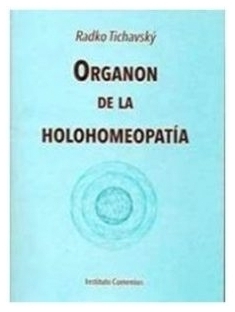
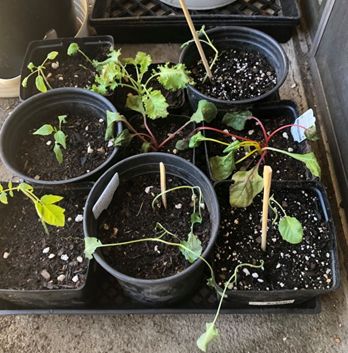
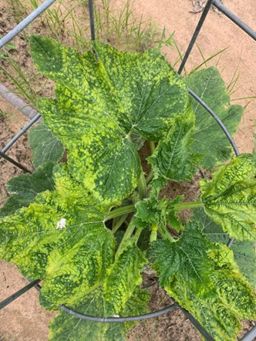
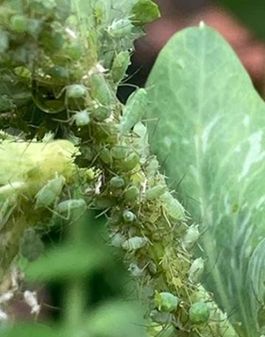

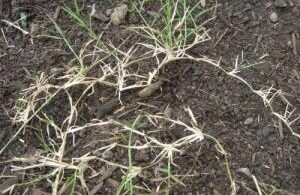

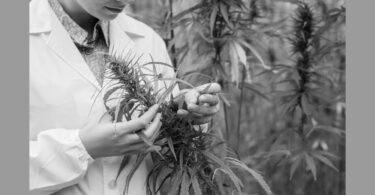

Do I post my questions in the comment box or is there another page?
yes here you can post it
Sir what are medicines used for pest in Cotton crop??